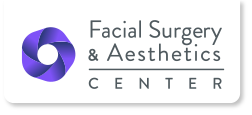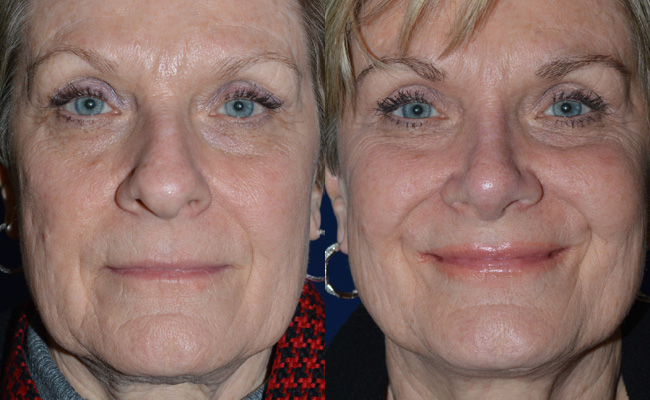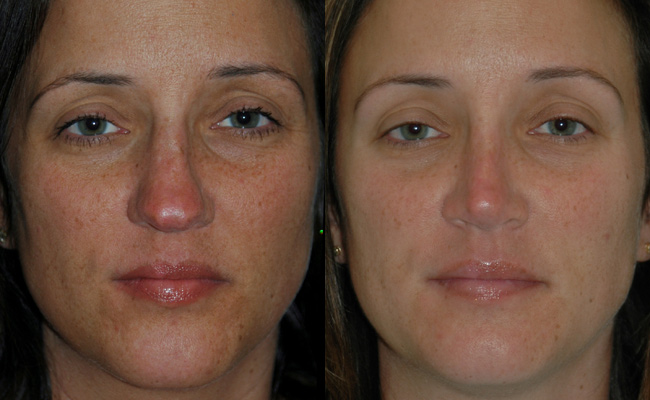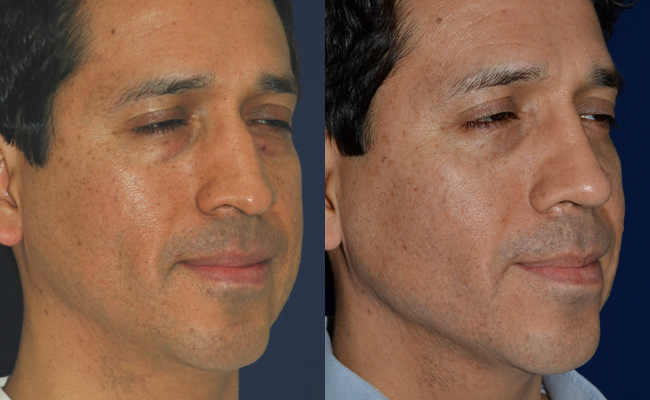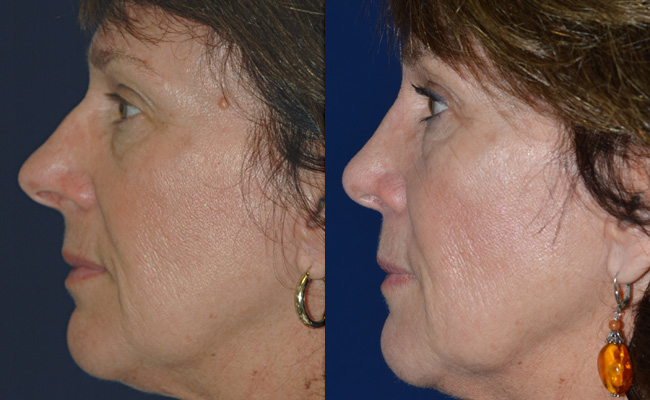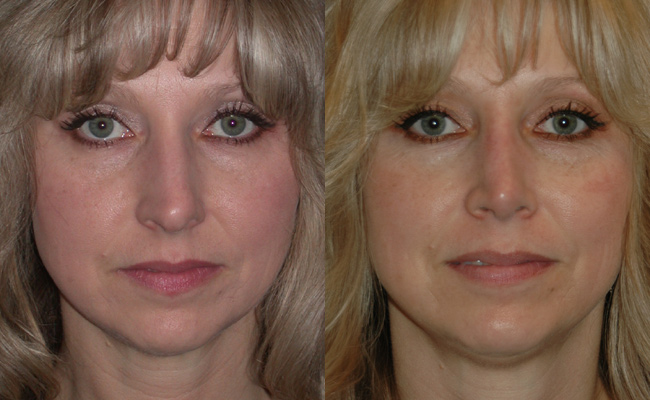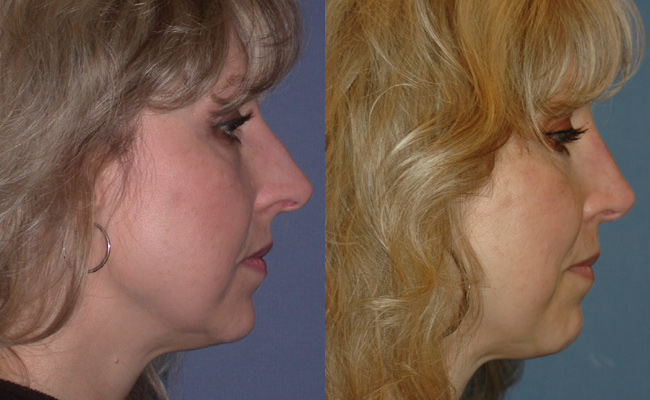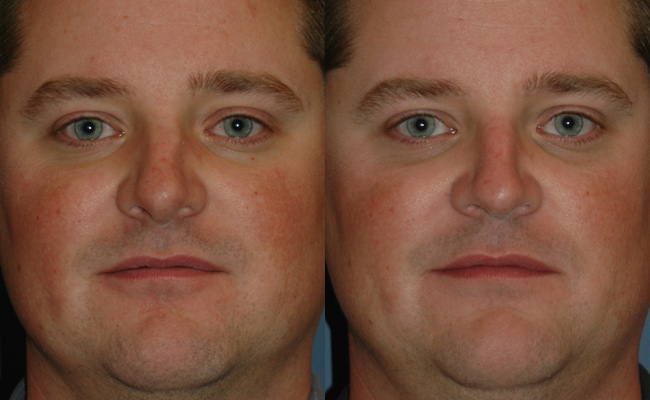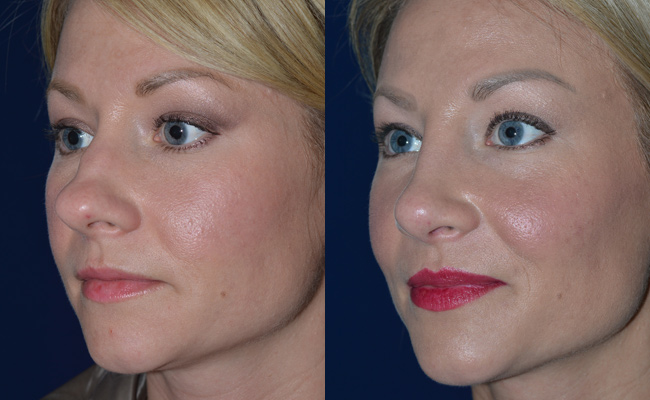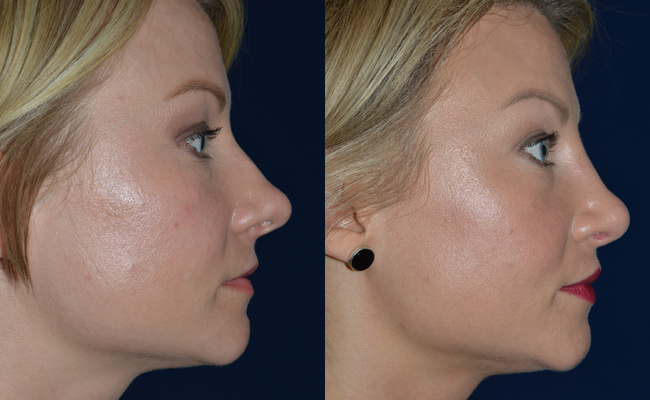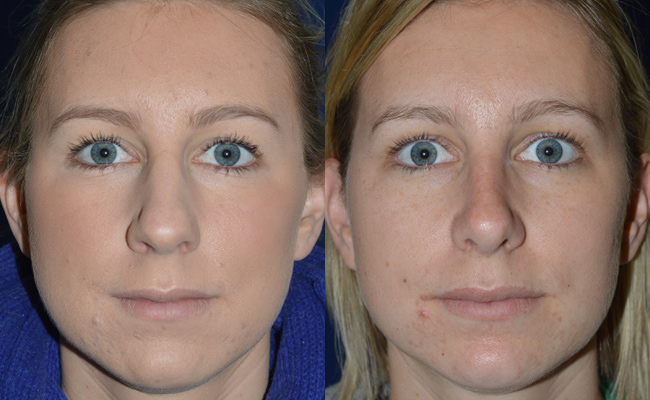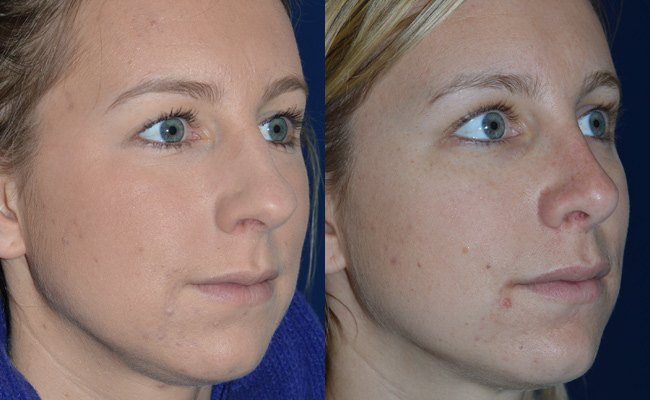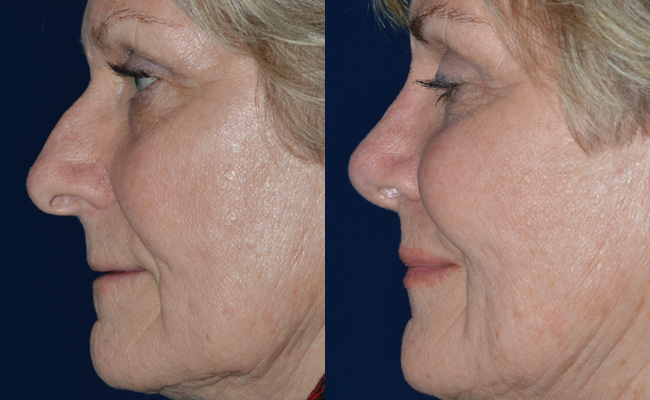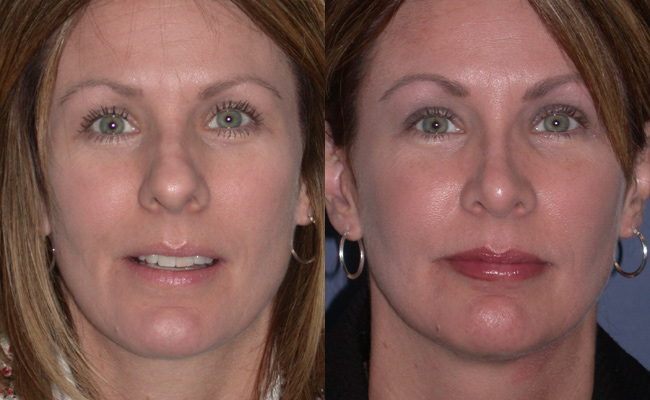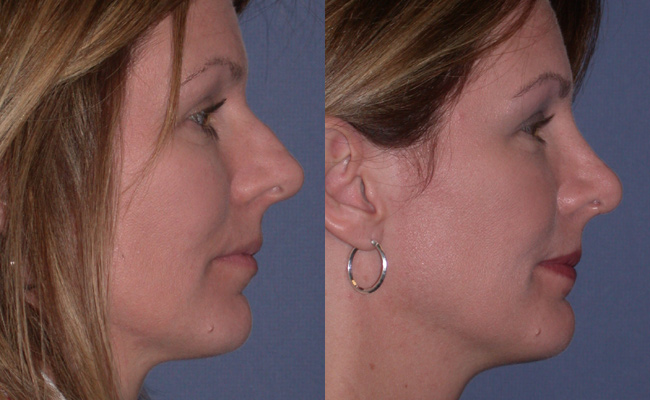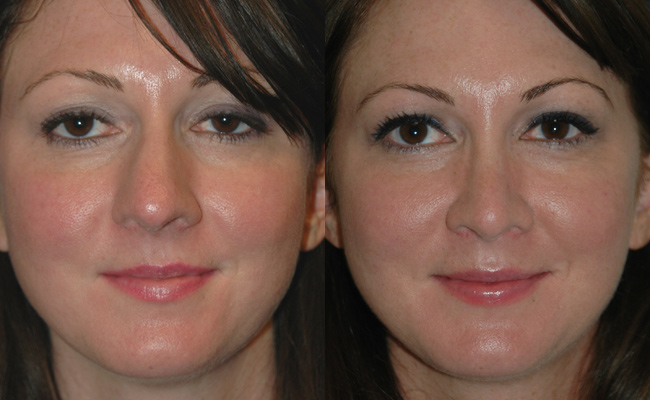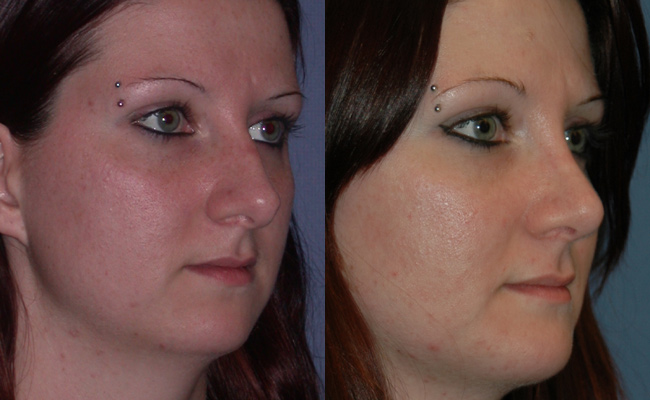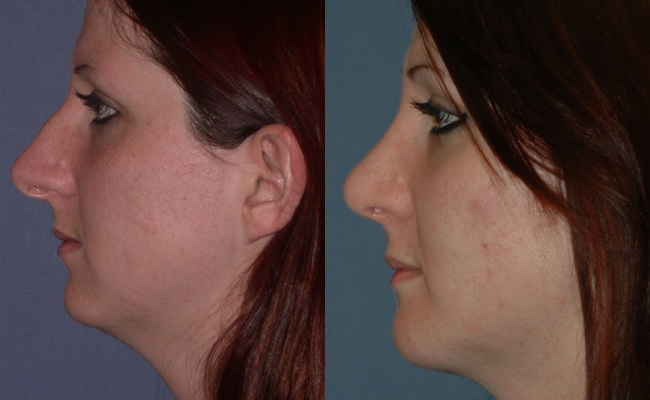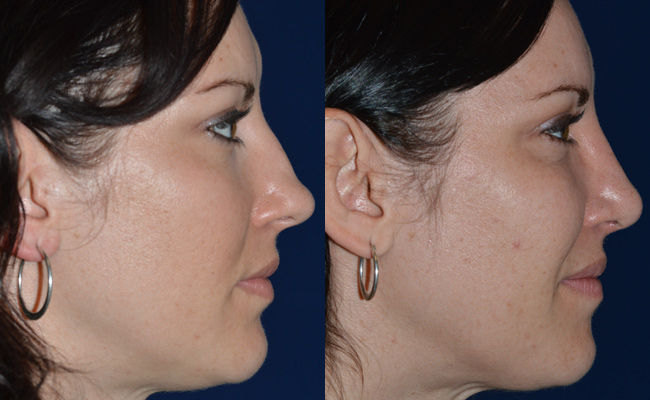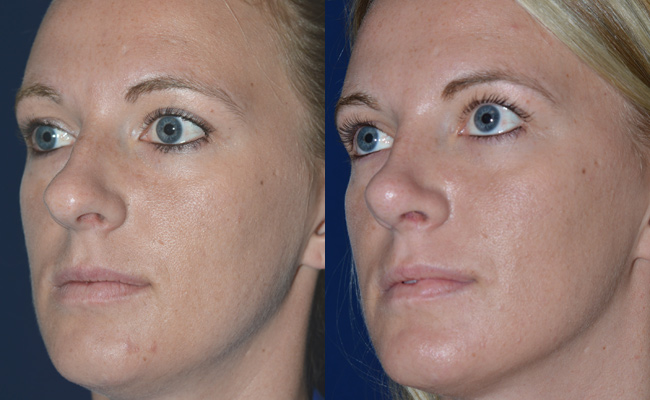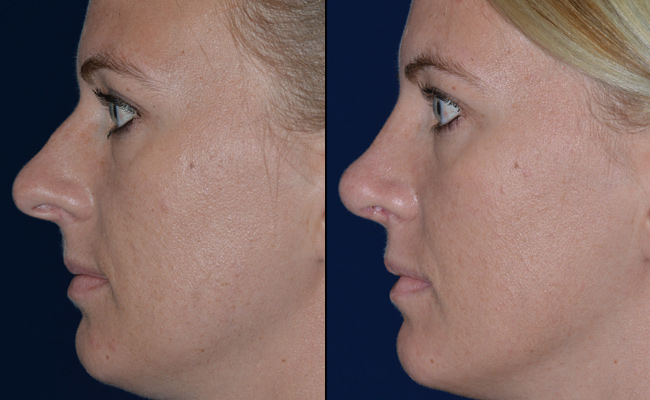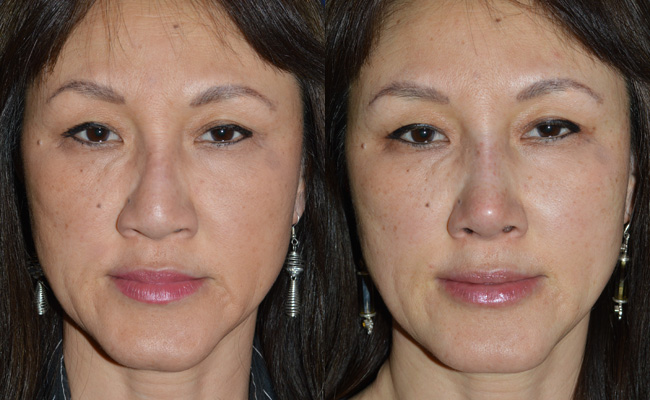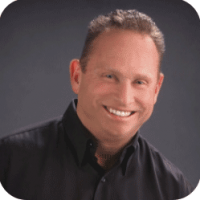
Best Rhinoplasty Results in Denver
Your nose plays a vital role in the appeal of your face. It is also essential in your ability to breathe with ease. Rhinoplasty, also known as a nose job, is a plastic surgery procedure that corrects the form and function of the nose. Whether you are seeking a nose that fits your face better or easier breathing, Dr. Menachof is the best rhinoplasty surgeon in Colorado. His has refined and perfected his rhinoplasty techniques over the course of 4,000 rhinoplasty procedures and over 1,000 revision rhinoplasty surgeries. After your rhinoplasty procedure, you will have a nose that looks natural and attractive.
Rhinoplasty Quick Facts
- Surgery time — 2 to 2 1/2 hours
- Anesthesia type — General or Local with some sedation
- Setting — Surgery Center or Office Operating Room (OR)
- Recovery time — 10-14 days for all activities
- Success rate — greater than 95%
Finally Got my Much Needed Rhinoplasty
Dr. Menachof’s staff told me they believe he is “the best in his field” and after having him perform my rhinoplasty and traditional face lift I agree he is the best! I could not ask for better results; in fact, the results are even better than I expected!
Laurabeth, Greenwood Village, CO
View All
Should I Get a Nose Job? There are many reasons to consider a nose surgery, including:
Dissatisfaction with the size/shape of your nose
Rhinoplasty can correct the shape, size and projection of the nose to help improve facial harmony. Aesthetic issues may be a result of genetic abnormalities, injuries or congenital deformities. Dr. Menachof uses visual imaging techniques to help patients receive the best results possible.
Cosmetic surgery can help achieve one or more of the following:
-
-
- Straighten a crooked nose
- Smooth a prominent bump
- Reduce the length of a nasal tip
- Refine a bulbous nasal tip
- Narrow a wide nose
- Reduce the size of a nose
- Restore symmetry to the nose
-
Breathing difficulties
Issues inside of the nose and nasal passages can cause breathing difficulties. A nose surgery, called septoplasty, can straighten a crooked septum to improve the nasal airway. By combining septoplasty and rhinoplasty (called septorhinoplasty), we can improve the functionality and the appearance of the nose at the same time.
Poor results from a previous nose job procedure
We perform revision rhinoplasty when patients are unsatisfied with previous results from a rhinoplasty surgery. Dr. Menachof has performed over 1,000 successful revision rhinoplasty surgeries in South Denver.
After your nose surgery, you will have more balanced facial features, a more defined profile and improved breathing. The results are typically permanent, but nasal cartilage and tissues can shift over time due to aging.
How Much Does A Nose Job Cost?
Medical insurance does not typically cover plastic surgery. However, depending on the terms of your health insurance, your plan may cover part of your rhinoplasty procedure. By combining a functional nose correction surgery with an aesthetic surgery, you can reduce out-of-pocket expenses. The total average cost of rhinoplasty can range from $5,000 to $10,000. Cost varies based on the amount of work you need, difficulty of the procedure, experience of your surgeon and the type of anesthesia used.
Nose Job Recovery Time
After your rhinoplasty surgery, you will experience swelling, bruising and minor discomfort. You will use a splint for several days to help support your healing nasal structures. We will remove your splints and external sutures at a follow-up appointment. You cannot blow your nose or apply makeup until your tissues have started to heal. Patients typically return to normal activity a week after surgery, and can return to exercising 2-3 weeks post-surgery. Some swelling may continue for several months. In most cases, scarring is invisible.
Steps of a Rhinoplasty Procedure
For open or closed rhinoplasty:
- The patient is under either general anesthesia or twilight sedation.
- After we administer anesthesia, we make incisions inside of the nose (closed) or on the bottom part of the nose (open).
- We lift the skin of the nose off and remove or rearrange the underlying bone and cartilage to re-shape the structure of the nose.
- We then re-drape the nasal skin over the new framework.
- And finally, we close your incisions.
Types of Rhinoplasty
We perform surgical rhinoplasty using an open or closed rhinoplasty approach, depending on your specific needs and preferences. While there is a lot of debate about which rhinoplasty technique is better, both have advantages. Dr. Menachof will determine which rhinoplasty approach to use based on your specific needs, after an in-depth consultation.
At Facial Aesthetics & Surgery Center, we offer the follow rhinoplasty procedures:
Closed Rhinoplasty uses incisions located inside the nose
Open Rhinoplasty involves a small incision placed across the narrowest part of the bottom part of the nose
Non-Surgical Rhinoplasty uses injectable fillers to add volume, camouflage a hump, raise the tip and hide some imperfections
Septorhinoplasty combines septoplasty to repair a deviated septum and rhinoplasty to improve the appearance of your nose
Rhinoplasty Before & After Gallery
Whether You:
- Don’t like the shape of your nose
- Have had a rhinoplasty before and don’t like the results
- Broken your nose and need it fixed
- Are having difficulty breathing…
Dr. Menachof can help. Schedule a consultation today to be on your way to looking and feeling confident, beautiful and energized.
Choose Dr. Menachof
Choosing a surgeon for your rhinoplasty procedure is difficult because it is a complicated and precise surgery. Dr. Menachof has performed over 4,000 rhinoplasty procedures and over 1,000 revision rhinoplasty procedures. As an ear, nose and throat specialist, he is able to conduct difficult nasal airway procedures with successful results. Dr. Menachof consistently makes complicated noses work and look better than ever. His patients come to Denver from all over the country for his technical expertise, experience and aesthetic success.
Rhinoplasty: Frequently Asked Questions
Open rhinoplasty involves incisions underneath the nose, and allows better visualization. If you have a very crooked nose or a nose that protrudes a lot, surgeons often use open rhinoplasty.
Closed rhinoplasty involves incisions inside of the nose that are entirely invisible post-surgery. While there is a lot of debate about which approach is better, both have advantages. Dr. Menachof will determine the method he uses for your surgery based on your specific needs.
The most important factors that determine whether you’re old enough to get a nose job procedure is nasal development and emotional maturity. If we perform surgery before the nose has fully developed, future growth may impact the appearance of the nose over time. Nose growth is usually complete around the age of sixteen. Changing your facial appearance is a big decision – make sure you choose a nose reshaping surgery for the right reasons.
There are very few risks associated with rhinoplasty surgery when you choose an experienced rhinoplasty surgeon. Potential risks include bleeding, infection, need for more surgery, voice changes, swelling, bruising, changes in your smelling ability, breathing issues, and nasal irregularities. Talk to your surgeon about any specific concerns you may have.
During your free consultation, Dr. Menachof will examine the inside of your nose to determine if you need septoplasty to correct internal issues related to breathing. Septoplasty can correct a deviated septum or a sinus condition and help improve breathing.
Make sure your rhinoplasty surgeon has extensive experience in performing nose jobs. This surgery takes close to 1,000 procedures to master the rhinoplasty techniques. Look carefully at before and after photos of the surgeon’s past patients. Pay attention to how the new nose changes the other features of the face, and notice if the faces you see are appealing to you. Ask the surgeon about function to help determine how much experience the surgeon has treating nasal congestion issues.
If you are dissatisfied with the results of a rhinoplasty procedure, you may seek an additional surgery to fix these issues. This is called revision rhinoplasty. Between 4 and 20 percent of people who have primary rhinoplasty will have a revision rhinoplasty
Most people have very little pain following their nose surgery. You will have a prescription for pain medication, but most patients only use it for a day or two. Nasal congestion is common for up to a week after surgery, but this does not typically cause pain.
Yes. Before and after photos of nose jobs will show you a surgeon’s achievable results. Look carefully at these photos to evaluate your surgeon’s tastes and abilities and to determine if he/she can help you get the look you want.
Typically, we use a light general anesthetic for your rhinoplasty procedure. We can do most minor revision procedures with a local anesthetic and some oral sedation in the office.
Yes – swelling is a normal part of the body’s healing process. About 70% of swelling is usually gone after one week; 80% by the end of the second week; and 90% at the end of the first month. The last 10% of swelling is located at the very tip of the nose and can take 6-12 months to disappear. This last bit of swelling is not noticeably visible.
Most people go back to work between 7 and 10 days after surgery. By that time, obvious swelling has dissipated and you can cover residual bruising with makeup.
You should experience improved breathing after your rhinoplasty surgery! Your facial plastic surgeon should be skilled in fixing aesthetic issues as well as inner issues with your nose.
- Confident – After having a rhinoplasty, you can be self-assured that people are no longer staring at your nose. A rhinoplasty will enhance your best features — and nobody will know you had surgery.
- Beautiful –Your new, natural-looking nose fits perfectly on your face. This surgery will balance your facial features, making you more attractive.
- Energized – A rhinoplasty will improve your ability to breathe through your nose, making you more awake and comfortable. Rhinoplasty surgery will also reduce snoring, allowing you to sleep through the night.
- Comforted – The results of your procedure actually do look like the photo imaging done in your consultation prior to the surgery.”
The cost of a rhinoplasty varies on the amount of work being done, the difficulty of the particular procedure (revision rhinoplasty is typically more expensive), the experience of the surgeon, the kind of anesthesia needed for your particular surgery, and whether or not extra costs may be incurred (needing extra cartilage, for instance).
The risks of rhinoplasty surgery are extremely low. Occasionally, people bleed a little bit for several days after surgery. Infection is incredibly unlikely, and most people are treated with antibiotics for several days after surgery preventatively. A small percentage (less than 5 percent) of people will have a subtle asymmetry to their nose that can usually be taken care of easily using a local anesthetic in the office.
The short answer is no. The nose does bleed easily, and if you are having other nasal surgery along with your rhinoplasty (sinus surgery), there is a very small chance (less than 3 percent) that packing would be used. For a rhinoplasty alone, I have never had to use nasal packing.
It depends on what is being done during your rhinoplasty. A relatively simple rhinoplasty can be done using a “closed” technique, meaning that all of the incisions (and therefore, all the scars) are inside the nose.
Revision rhinoplasty is a relatively common procedure. This is due to the complexity of the procedure. Revision rates are reported to be anywhere from 4-20 percent. READ MORE
